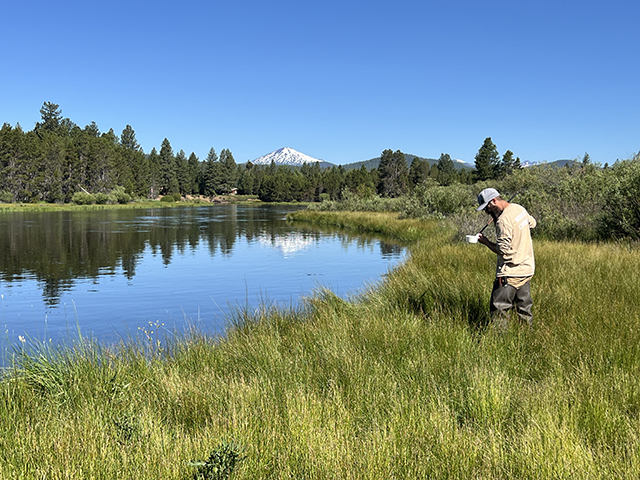Hounding for rocks
Published 4:00 am Wednesday, November 27, 2002
Jim Witty
The Bulletin
Late last week I grabbed a map and a tank of gas and headed for the hills to become a rockhound.
Actually, at the time I fancied myself more as some type of budding ist (mineralogist and geologist came to mind) than a sniffing, dirt-snuffling rock dog baying at boulders on the side of a hill.
I was in search of the elusive thunderegg, an unassuming oval chunk of stone that yields an exquisitely detailed agate center when it’s cracked open.
According to the literature I picked up at the Forest Service headquarters in Prineville, some of the best thunderegg specimens have come from White Fir Springs high in the Ochocos. So, brimming with confidence and armed with a vague notion of what they are and how to find them, that’s where I went.
There, on a moderately sloping hillside, lie the diggings, a series of rubble-strewn pits where other mineralogists have most definitely been before. The literature indicated that jasper-filled thundereggs can be found in a wide area across the mountainside.
Mel and Jerry Lindbeck, who operate Canutt’s Gems on Highway 97 south of Redmond, confirmed it.
Jerry, a serious student of all things igneous, sedimentary and metamorphic (and a certified rockhound), seemed delighted to show a visitor around the shop. She pointed out the thundereggs – some the size of goose eggs, others as big as cannon balls – which came from White Fir Springs. Then we strolled outside for the coup de gras, the piece de resistance, the mother of all thundereggs. It hulks in the yard, a beastly by-product of Oregon’s volcanic past.
According to the literature, to qualify as a thunderegg, a specimen must be spherical and have an exterior shell of varying thickness composed of rhyolite and containing a large amount of silica. The outer covering is usually brown. With the high silica content, both the outer layer and agate center polish up nicely.
Thundereggs were created when cavities were formed by steam and gases in cooling volcanic flows. The chambers were filled with agate or opal. The concentric bands found in many thundereggs were formed by different concentrations of silica-rich water flowing into the central cavity and crystallizing.
The thundereggs found at White Fir are composed of agatized jasper in a rhyolite matrix.
According to the literature.
I got skunked.
Oh, I found some bits and pieces no doubt discarded by more astute egg hunters, but the whole enchilada eluded me. Those little unpolished gems, however, along with the intriguing visit with the Lindbecks, fired my imagination and had me howling for more.
I’ll be back.
And this time I’ll pack a shovel.
Jim Witty can be reached at 541-617-7828 or jwitty@bendbulletin.com.








